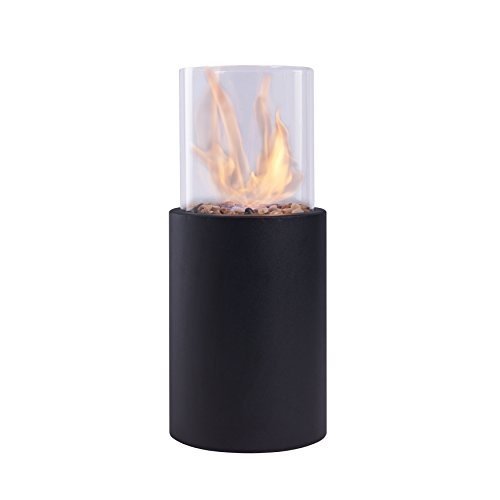
fireplaces7151
About fireplaces7151
See What Fireplaces And Stoves Tricks The Celebs Are Making Use Of
The Comprehensive Guide to Fireplaces and Stoves
Fireplaces and stoves have actually been important to human civilization for centuries, working as a source of warmth, light, and comfort. These appliances are available in various kinds and have progressed for many years, catering to varied preferences and technological improvements. This short article supplies a helpful summary of fireplaces and stoves, highlighting their types, advantages, upkeep tips, and installation considerations.
Types of Fireplaces
The world of fireplaces is abundant and differed. Here are the most typical types:
-
Wood-Burning Fireplaces:
- Traditional and charming.
- Requires experienced wood and routine maintenance.
- Produces an enjoyable aroma and crackling sound.
-
Gas Fireplaces:
- Offer benefit and ease of use.
- Available in vented and vent-free alternatives.
- More efficient and cleaner than wood-burning options.
-
Electric Fireplaces:
- Provide atmosphere without the requirement for a chimney.
- User-friendly with remote control options.
- Can be used as a supplemental heat source.
-
Pellet Stoves:
- Use compressed wood pellets as fuel.
- Highly efficient and eco-friendly.
- Typically geared up with thermostats for temperature level control.
-
Ethanol Fireplaces:
- Utilize bioethanol fuel, making them portable.
- Do not need venting, which permits flexible placement.
- Produce a reasonable flame with very little smoke.
-
Outdoor Fireplaces:
- Designed for outdoor settings; can be wood or gas-burning.
- Great for amusing and enhancing backyard looks.
- Typically constructed from stone, brick, or metal.
Benefits of Fireplaces and Stoves
Integrating a fireplace or range into a home provides many benefits:
- Aesthetic Appeal: Fireplaces act as striking centerpieces in any room, including warmth and character to home design.
- Increased Property Value: Homes with functional fireplaces tend to have greater resale worths.
- Energy Efficiency: Modern fireplaces and stoves are designed to be more energy-efficient, which can lead to lowered heating expenses.
- Backup Heating Source: In case of power blackouts, wood-burning and gas fireplaces can serve as important heating sources.
- Versatile Heating Solutions: Different kinds of fireplaces deal with various heating needs and way of lives, from cozy ambiance to efficient heating.
| Kind of Fireplace/Stove | Fuel Source | Efficiency Rating | Maintenance Level |
|---|---|---|---|
| Wood-Burning | Wood | Moderate | High |
| Gas | Natural gas/LP | High | Low |
| Electric | Electrical power | High | Extremely Low |
| Pellet | Wood pellets | High | Moderate |
| Ethanol | Bioethanol | Moderate | Low |
| Outdoor | Wood or gas | Moderate | Varies |
Maintenance Tips
Correct maintenance extends the life of fireplaces and stoves, ensuring safety and efficiency. Here are some vital tips:
-
Regular Cleaning:
- Wood-burning fireplaces ought to be cleaned up after a complete season of use to eliminate soot and creosote.
- Gas fireplaces require regular examination of the burner and vents.
-
Regular Inspections:
- Have chimney sweeper carry out yearly evaluations to identify blockages or structural damage.
- Check the seals and gaskets on gas units to avoid leakages.
-
Fire Safety:
- Install smoke and carbon monoxide gas detectors in homes with fireplaces or stoves.
- Keep a fire extinguisher near the fireplace or range for emergency situations.
-
Usage Quality Fuel:
- For wood-burning systems, always utilize experienced wood; avoid treated or painted wood.
- When using pellets, ensure they are kept properly to prevent wetness absorption.
-
Handle Airflow:
- Keep vents and ducts clear to promote efficient ventilation and airflow.
- Think about using glass doors or screens to lessen debris and ash in the home.
Setup Considerations
Setting up a fireplace or range requires cautious consideration of numerous factors:
-
Location:
- Choose a place that permits for proper clearance and ventilation.
- Consider the layout of your home and the benefit of natural heat circulation.
-
Building Codes and Permits:
- Check local policies concerning installations and essential licenses.
- Engage an expert to ensure compliance with safety requirements.
-
Fuel Type:
- Evaluate your fuel alternatives based upon accessibility, expense, and environmental impact.
- If choosing for gas, make sure existing gas lines can accommodate the new home appliance.
-
Ventilation:
- Proper venting is vital for security and performance, especially for gas and wood-burning systems.
- Seek advice from an expert to identify the best venting service.
-
Visual Consideration:
- Select a style that complements your home’s interior.
- Think about mantels, surround materials, and colors that match your decoration.
FAQs
What is the best kind of fireplace for heating?
Gas fireplaces are generally more efficient for heating, while wood-burning fireplaces provide more ambient heat.
How frequently should I clean my fireplace?
Wood-burning fireplaces need to be cleaned up at least when a year, while gas fireplaces require less regular attention depending on use.
Can I install a fireplace myself?
While some homeowners may try DIY setup, it is suggested to work with a professional to guarantee security and compliance with building regulations.
Are electric fireplaces efficient?
Yes, electric fireplaces are very efficient and can function as efficient additional heating sources, especially in smaller sized spaces.

What is the lifespan of a fireplace?
The life-span of a fireplace varies depending upon the product, type, and upkeep; however, a well-kept wood-burning fireplace can last over 30 years.
Fireplaces and stoves remain timeless functions in homes, offering warmth and atmosphere. Comprehending the various types, benefits, and maintenance requirements can help property owners make informed choices about setup and care. With mindful planning and routine maintenance, these devices can enhance both the convenience and value of a home for several years to come.
No listing found.
